Micro-revamping: a low-key way to give communities a makeover
Shanghai’s planning authority is “micro-revamping” — doing subtle, low-key renovations — in several old communities to improve living standards while retaining the traditional layout and lifestyle of the city’s shikumen (stone-gated) lane neighborhoods.
Instead of demolishing and rebuilding methods, micro-revamping aims to revitalize the old communities, mostly built around the 1980s, with subtle renovations and innovative ideas.
The planning authority has been conducting such campaigns at a dozen downtown communities and will expand the practice citywide. Many of the neighborhoods are in the old town. The once prosperous area has retained historic traces of Shanghai’s development and kept the traditional lifestyle.
They include some well-preserved shikumen houses, which incorporate Chinese and Western architecture.
But the cramped living spaces and environment don’t meet the standards of modern urban life. Some of the homes still share kitchens and toilets and have been listed by the government as “the shikumen with the worst living environment.”
To make improvement within the limited space, the campaign has solicited ideas from designers including college professors and students, designing firms and amateur architects.
A poll will be held among experts, the urban planning authority, subdistrict officials and residents’ representatives to pick a solution.
Liu Yuelai, a professor of landscape design at Tongji University, is encouraging residents to plant herbs and flowers in the community gardens.
The May Garden in the Meilong Jiucun in Xuhui District, for instance, was created from a former community activity room and a cement playground covering 450 square meters.
After the renovation, over a dozen of herbs and flowers have been planted in four small lands in the garden. Plants include rosemary, lavender, water lily and bamboo. Several “herb boxes” have been set up for those on wheelchairs and who are visually handicapped to smell and touch. An insect land was designed for children to recognize various kinds of little creatures.
The trial program is also a response to a national campaign to improve living conditions across the country by promoting greener lifestyles, which has been applied on a broader scale.
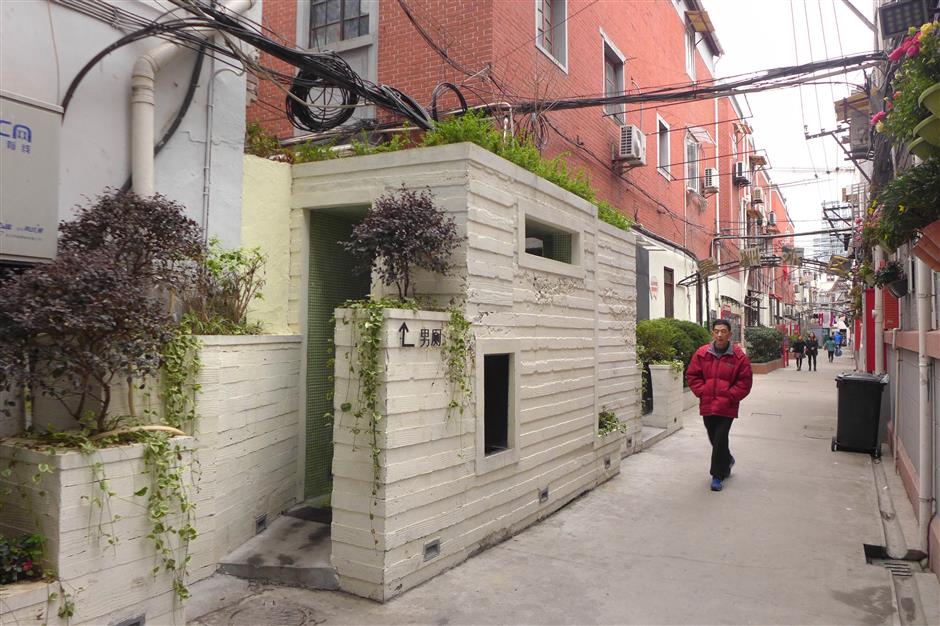
Green plants decorate the Guizhouxi Community.
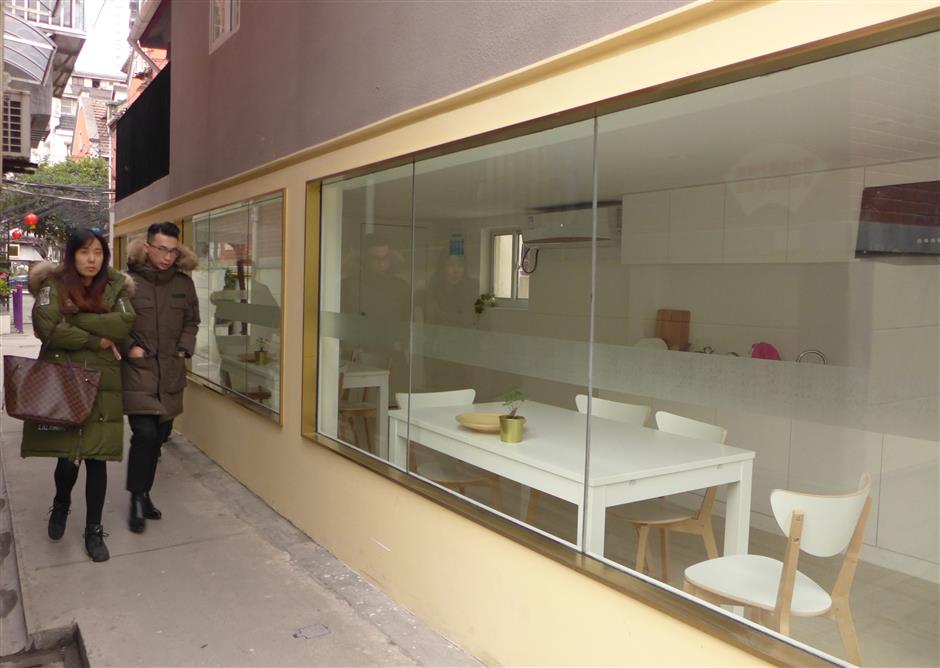
The shared living room
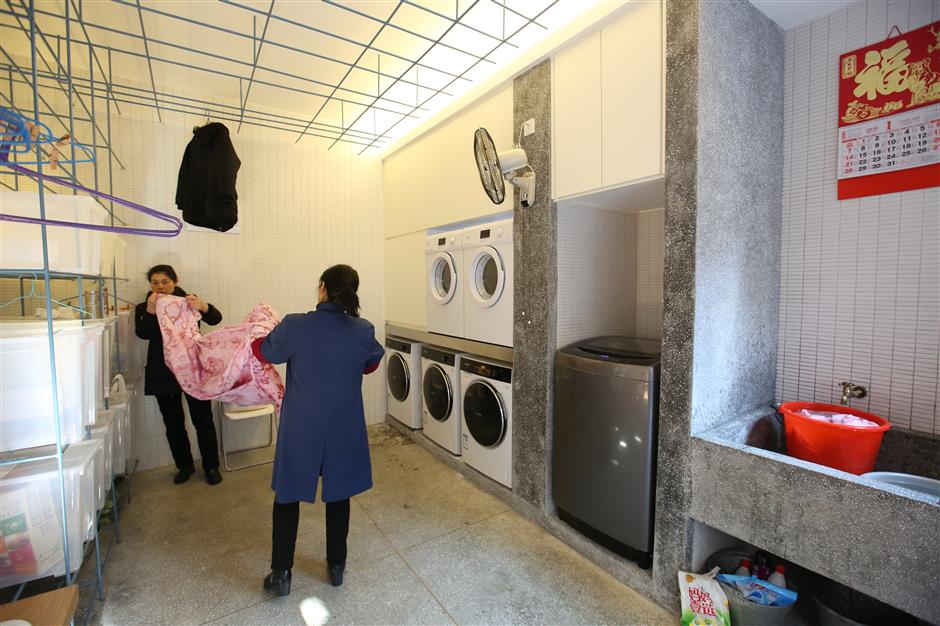
The public laundry room
Guizhouxi Community
Downtown districts have begun trial efforts to expand living and activity space for residents in old communities by setting up communal space and facilities.
Residents in some old neighborhoods with limited living space can now cook in larger public kitchens with full facilities, meet friends or hold and attend festival occasions at public living rooms, as well as read books or try their hand at designing their own artworks.
The first such “shared living room” has been completed in the Guizhouxi Community near Nanjing Road E. in Huangpu District as a demonstration for other lane-style neighborhoods.
The two-story house, renovated from the former community activity center, includes shared kitchen facilities and living and study rooms that residents can make reservations to use.

The shared hanging patio
There’s also a nearby public laundry house, with five tumbler washing machines, for residents to share.
They can save their limited living space at home and do laundry at the public facility.
After finishing laundry, they can hang the clothes on a “shared hanging patio” at the shikumen community. It used to be very common in old communities to hang clothes overhead like colorful flags.
The shared patio has a wooden frame which turns hanging clothes into “special scenery,” while retaining the traditional local lifestyle.
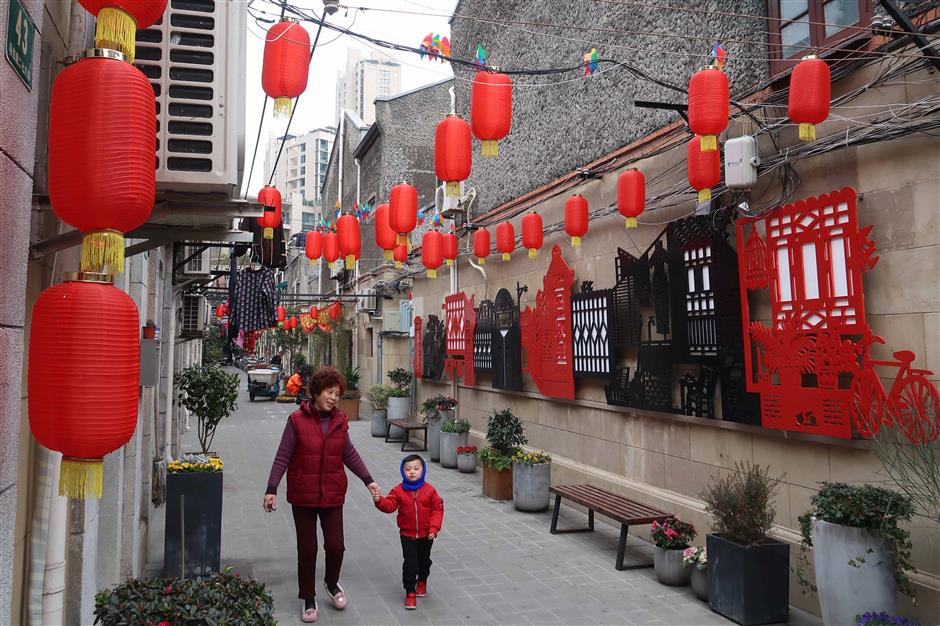
Xichengli has over 1,000 households.

The anti-skid pedestrian road
Xichengli Neighborhood
The over 1,000 households in Xichengli neighborhood in Huangpu District are also beneficiaries of micro-renovation for old communities. The 92-year-old neighborhood in the Hengfu (Hengshan Road and Fuxing Road) Historical Protection Zone is home to 15 cultural relics such as the former residence of painting master Zhang Daqian (1899-1983).
As a typical shikumen community, its housing units were cramped and old, with shared toilets and kitchens and a shortage of facilities. The renovation gave the neighborhood a brand-new look last year.
Most households got private toilets. Shared kitchens, walls and roads have been refurbished, leaking roofs fixed and old doors replaced.
“The approach is to improve the living environment of residents but protect the historical flavor of these stone-gated houses at the same time,” said Li Sun, director of the Huangpu District Housing Management Bureau.

Children at Anshan New Residential Quarter enjoy the art installations and hammock in the neighborhood.

Anshan New Residential Quarter
In Yangpu District, a line of former small eateries and nail salons on Tieling Road have been converted into designing studios, galleries and public spaces where residents can listen to lectures and watch the designing process of professors and students from the nearby College of Design and Innovation of Tongji University.
The college has moved part of its teaching and research sites to the New Center of Contemporary Jewelry and Fashion Culture within the community in a trial called Open Your Space.
The site of the fashion center was once occupied by wanton and hotpot restaurants. Residents had long complained about the noise and smoke, said Du Juan, director of Siping Road Subdistrict. The authority later took over the site and handed it to the college.
“The 150-square-meter building was too small for a community center, and subdistrict officials could not find any other use,” Du said.
Designers and students from the college also decorated surrounding areas such as the rubbish-collecting site, manholes, walls, greenbelts and telephone booths to make the area an attractive public space. The telephone booth, for instance, is now a mobile phone charging station.
More revamping projects underway
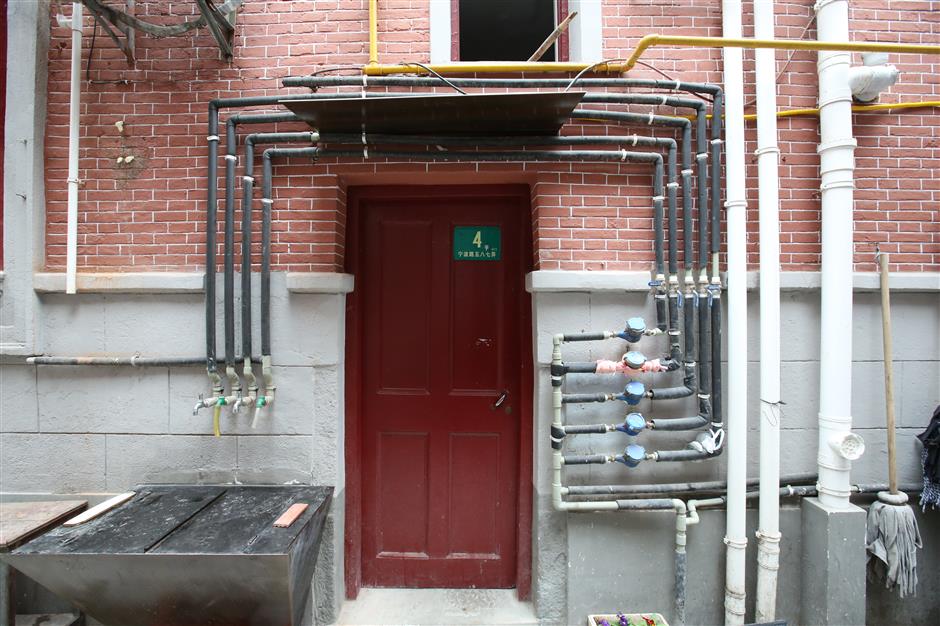
Renovated water pipes at an old community in Aimin Lane
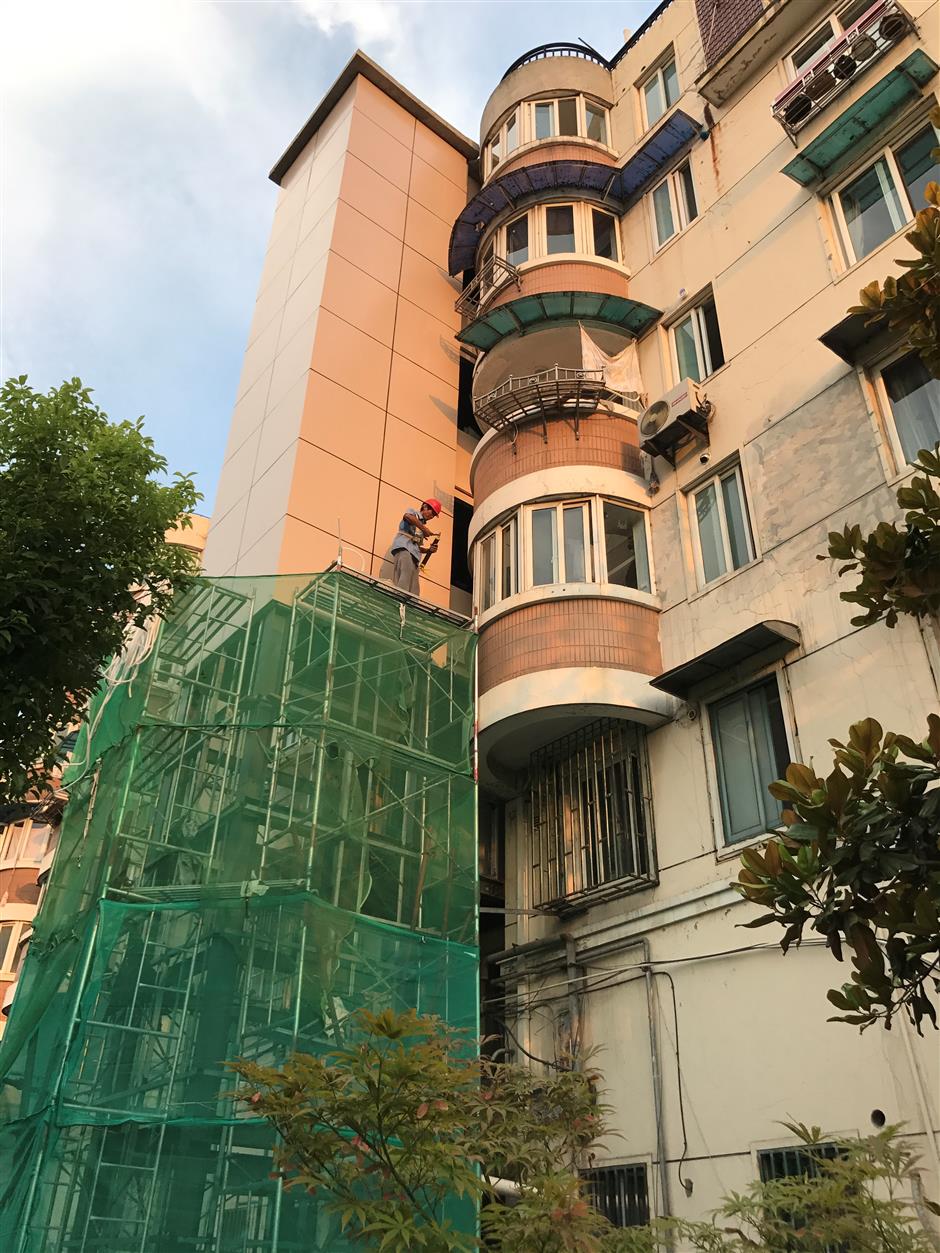
A worker installs elevators to the old buildings on Meichuan Road.
















